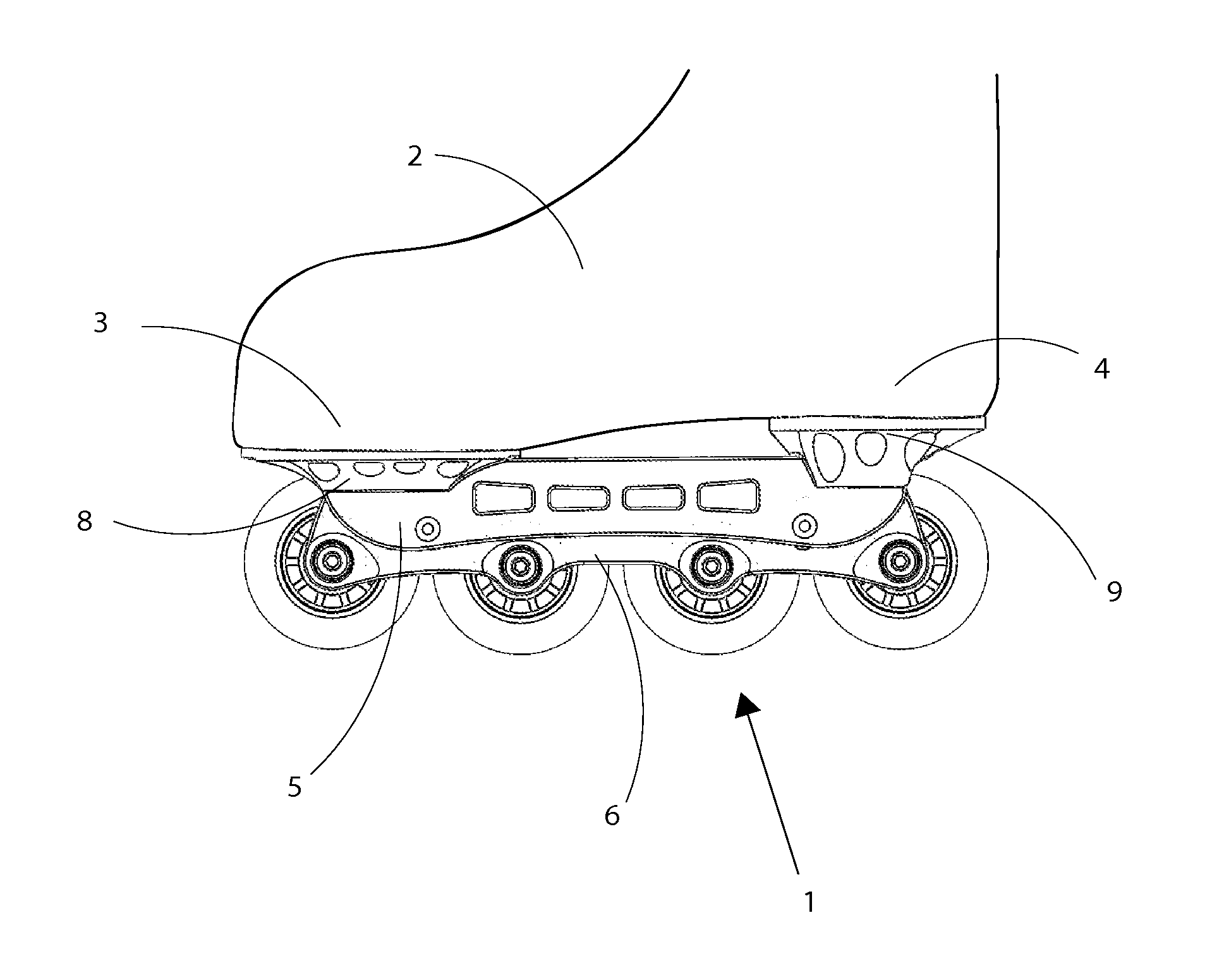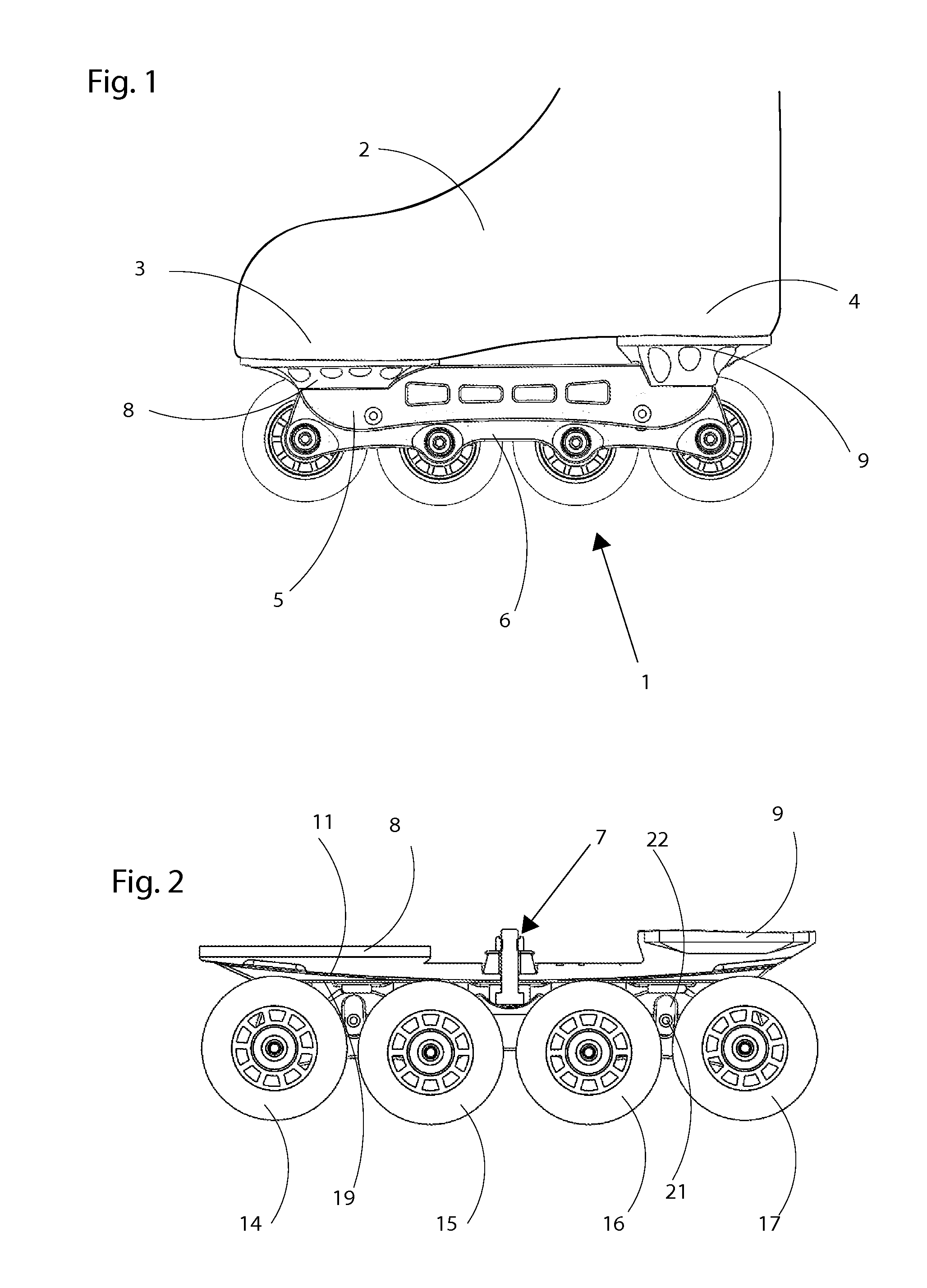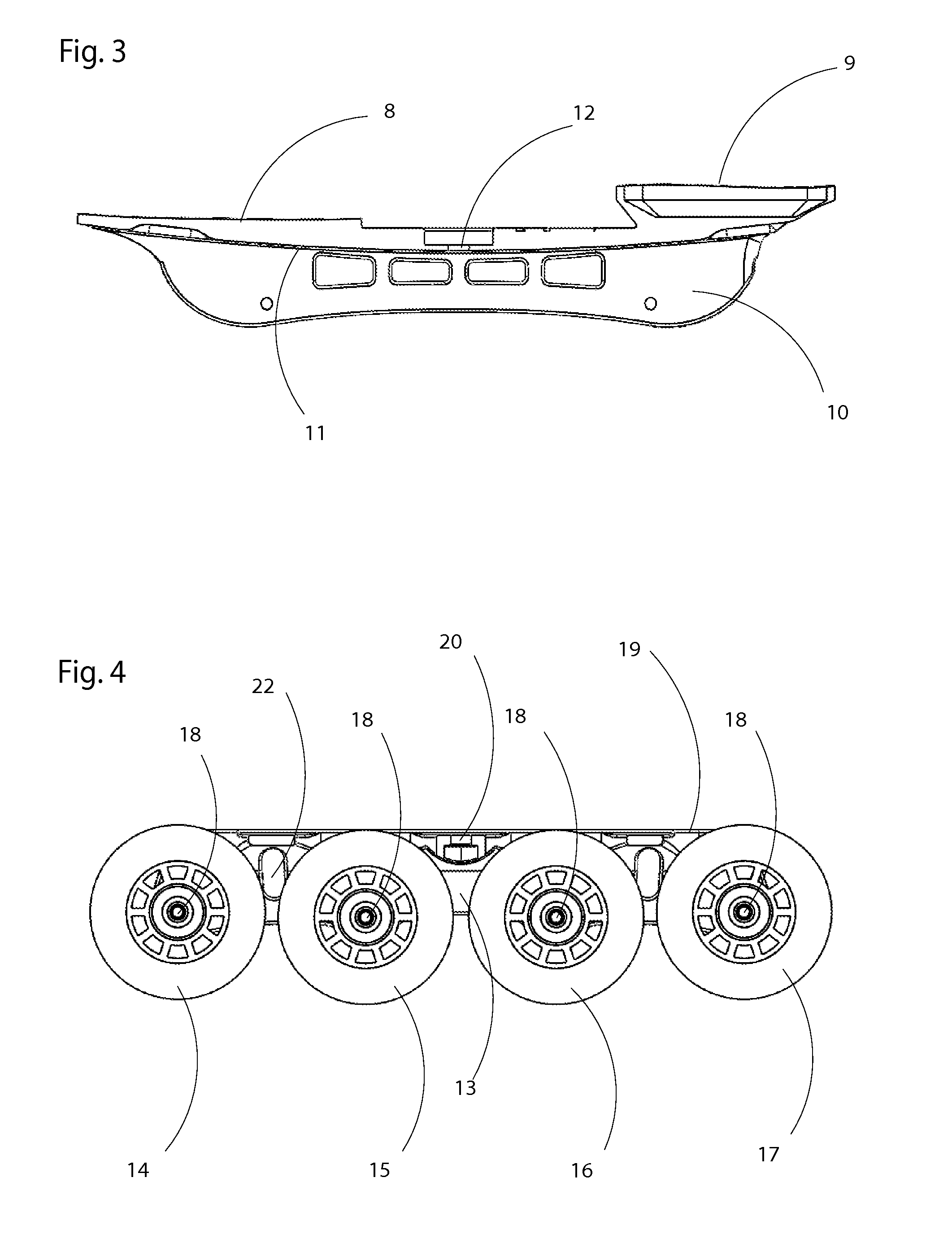Roller skate
a roller skate and roller technology, applied in the field of roller skates, can solve the problems of reducing the service life affecting the performance of the roller skate, and unable to solve the problems in a satisfactory manner, so as to facilitate the change of direction and reduce the clumsiness of skating
- Summary
- Abstract
- Description
- Claims
- Application Information
AI Technical Summary
Benefits of technology
Problems solved by technology
Method used
Image
Examples
Embodiment Construction
[0014]The invention will be described in greater detail below with reference to the accompanying schematic drawings that in an exemplifying purpose show the current preferred embodiments of the invention.
[0015]FIG. 1 shows an inline skate with an inline wheel frame in accordance with the present invention.
[0016]FIG. 2 shows a cross-sectional view of an inline frame in accordance with the first embodiment.
[0017]FIG. 3 shows in more detail a cross-sectional view of the upper chassis section included in the inline frame.
[0018]FIG. 4 shows in more detail a cross-sectional view of the lower chassis section included in the inline frame.
[0019]FIG. 5a-c shows the joint function in more detail.
[0020]FIG. 6a-c shows the present inline frame's function.
[0021]FIG. 7a-c shows an embodiment of the present invention.
[0022]FIG. 8a-c shows an embodiment of the present invention.
[0023]FIG. 9a shows an inline frame, and FIG. 9b is a perspective side view of a separate chassis element according to an e...
PUM
 Login to View More
Login to View More Abstract
Description
Claims
Application Information
 Login to View More
Login to View More - R&D
- Intellectual Property
- Life Sciences
- Materials
- Tech Scout
- Unparalleled Data Quality
- Higher Quality Content
- 60% Fewer Hallucinations
Browse by: Latest US Patents, China's latest patents, Technical Efficacy Thesaurus, Application Domain, Technology Topic, Popular Technical Reports.
© 2025 PatSnap. All rights reserved.Legal|Privacy policy|Modern Slavery Act Transparency Statement|Sitemap|About US| Contact US: help@patsnap.com



